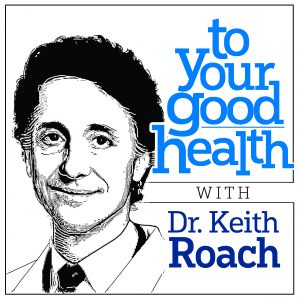TO YOUR GOOD HEALTH: There’s no such thing as ‘cure’ for autism
Dr. Keith Roach — May 10, 2021DEAR DR. ROACH: A friend took her autistic son to a clinic in Mexico where he was fed a bleach solution that was supposed to cure his autism, but instead it made him very sick. He was deeply distressed and regressed in his behavior, and there was nothing my friend could do because in Mexico these kinds of clinics are allowed to operate with impunity. Isn’t there some way to stop this kind of thing? — P.P.L.
ANSWER: Before I get into why this story makes me both sad and angry, I want to address autism. Autism is an increasingly diagnosed condition that includes difficulty with social interactions, stereotyped repetitive movements and delayed language skills, although there is a subset of people with autism with no language delay. It’s absolutely critical to recognize that autism is a spectrum condition, ranging from people with profound disabilities to those who are so mildly affected that the diagnosis is very subtle. Correct diagnosis is complicated, even for an expert. Intellectual abilities in autism range from severe cognitive impairment to far above-normal intelligence. As such, the proper medical care of a person with autism depends on his or her unique situation.
Although most people on the autism spectrum need some extra empathy and understanding in order to have the best possible life, people with autism do not need to be “cured.” There is no “cure” for autism, so when you hear a professed “cure,” you should be deeply suspicious.
In the case of the bleach solution, it is sadly not just in Mexico where this happens. The Food and Drug Administration had to warn consumers against the use of a product called “miracle mineral solution,” “chlorine dioxide” and other names. It is hard for me to believe the FDA has to warn people not to drink (or make your child drink) a powerful bleaching agent, but there are increasing reports of its use. It causes damage to the intestines, as you correctly note, but may also cause liver failure, nausea and vomiting, and dehydration. There is no evidence that this “treatment” is effective for any condition, even though it is marketed for cancer and HIV as well as autism. This is what makes me angry: I cannot imagine a crime much worse than profiting off of a treatment known to be both dangerous and ineffective.
What makes me sad is that I can empathize with parents who have a child with autism who want their child to be more like other children, more “normal.” It takes time to come to grips with the fact that your child is not like others, but that he or she is a unique person who should be loved and accepted for who he or she is. That means finding creative ways to really help your child. There is a wide range of appropriate treatments for people with autism, preferably considered as early as possible, which is why it is so important to make the correct diagnosis quickly in a child with autism.
***
- ROACH WRITES: After my recent column on mercury, a toxicologist wrote to remind me that metallic mercury can be absorbed through the skin and thus mercury, such as from a broken thermometer, should never be played with and should be properly disposed of.
Dr. Roach regrets that he is unable to answer individual questions, but will incorporate them in the column whenever possible. Readers may email questions to ToYourGoodHealth@med.cornell.edu.
© 2021 North America Synd., Inc.
All Rights Reserved
TO YOUR GOOD HEALTH: Homemade ‘foot box’ relieves night cramps








